Raising pigs is my favorite farming activity. And because of that, I’ve spent the last several years developing systems that make it much easier to raise hogs and manage them on my farm. If you are wanting to raise pigs yourself, I would love to share everything I know with you and more.
Introduction to Raising Pigs
I have written this guide using a Q&A style. This is to hopefully answer each individual question about raising pigs that you might have.
You’ll also see that under each answer I link to other articles I have written that cover certain topics more in-depth. Feel free to read those posts to learn more and then come back here to continue on.
My plan is to continually add new information to this guide. I’m treating it as an ever-evolving living document on raising pigs.
With that being said, I truly hope this guide is helpful and provides you with all the information you’ll need to start raising hogs on your farm today.
Should I raise pigs?
Do you like pigs? Or better yet, do you love pork? I do! Which is one of the reasons why I have put so much time and energy into raising pigs on my farm.
Joel Salatin often talks about picking a centerpiece for your farm. Pigs are that for mine.
That doesn’t mean I don’t raise other animals. I do. It just means I put a lot of time and energy into raising pigs and selling pork.
Now, the question for you is why do you want to raise pigs? Your reason doesn’t have to be the same as mine. In fact, it may be totally different. And that’s ok.
Two big questions you may want to ask yourself though are do you have enough space on your farm to raise pigs? And, if you are planning on selling pork, do you like it enough to eat it yourself if you have trouble selling it?
I’m a big proponent of pasture raised pigs. It’s better for the animal, the pork is healthier, and it’s better for the environment.
You may not agree with me on those points and you may have a different idea on how you want to raise pigs on your farm. Either way, I believe this guide will still be helpful to you.
What do pigs eat?
Pigs are omnivores meaning they can eat plants and animals. This includes things like grains, legumes, grasses, nuts, roots, vegetables, fruit, dairy, eggs, and more.
Pigs raised on a farm typically eat pig feed that is primarily made of corn, soybean meal, and a vitamin pack.
Do pigs eat meat?
Yes, pigs can and do eat meat. If you raise pigs out on pasture, this may include things like the occasional frog, worms, snake, or any other small animals if they are hungry enough.
Pigs are also scavengers and may eat the carcasses of dead animals that they come across.
Do I have to feed pigs that are raised on pasture?
When raising pigs on pasture or in woodlots, you will more than likely need to supplement them with additional feed sources to make sure they get enough protein, and specifically, enough lysine. If not, the pigs may stall out and not grow. Even worse, they may become sick from a nutrition deficiency.
Certain breeds seem to handle this better than others. I have raised American Guinea Hogs and Kuneunes on pasture and in the woods during the spring, summer, and fall without supplementing them with any additional feed sources and they thrived.
However, my Berkshires, Large Blacks, Hampshires, and Blue Butts would stall out and not gain weight without enough supplemental feed.
What kind of pig feed do I need?
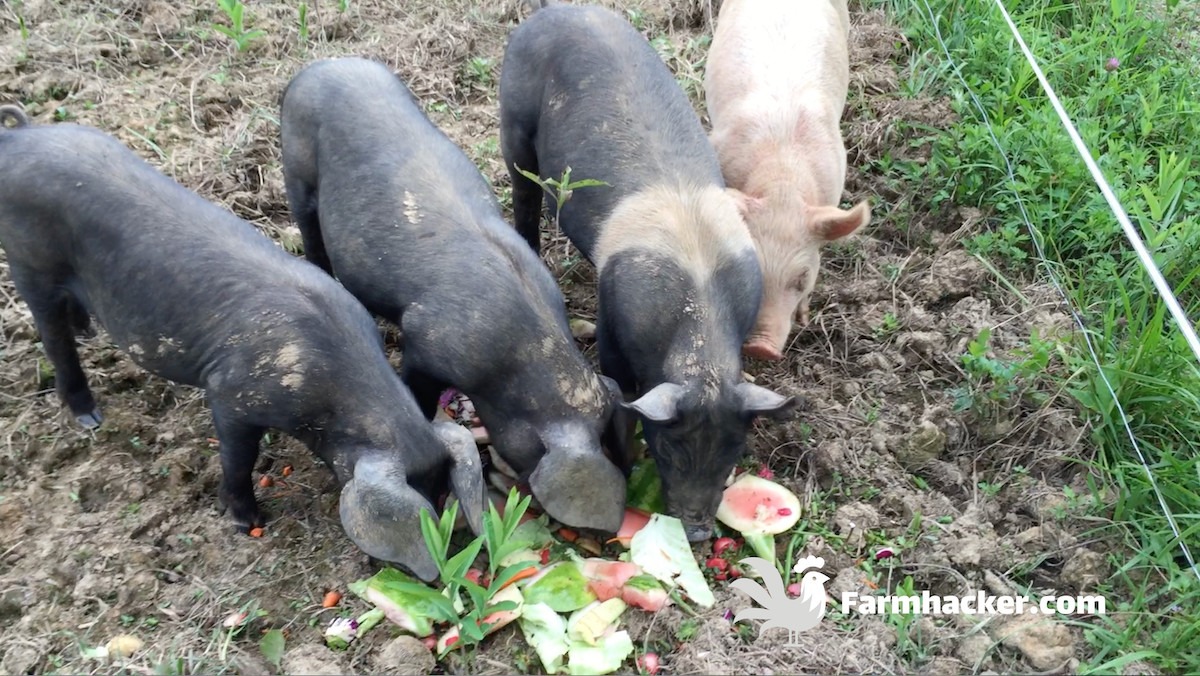
Whether you are just wanting to supplement your pigs with additional feed or provide them with a complete food source, you have a few options.
Most pig feed is primarily made up of corn, soybean meal, vitamin pack, and some additional ingredients. There are several brands of feed out there that include these ingredients and will work well for your pigs. Check out my article on The Best Pig Feed to learn more.
There are also other options for feeding your pigs besides traditional pig feed. I have had some success with planting vegetables in paddocks and letting my pigs eat them when they are ripe. Check out my article on How to Set Up an Organic Pig Feed System Using Vegetables to learn more.
Some pastured pig farmers have also created alley cropping systems where they raise certain annuals (corn, root crops, vegetables, etc) in between perennials (fruit & nut trees) and rotate their pigs in and out of these systems depending on when they are ready for harvest.
Other pig farmers will use things like whey or milk instead of traditional feed. This works well when you live near a milk, yogurt, or cheese processing plant that needs to get rid of their byproducts or waste.
Other feeds could include things like spent brewery grains, expired vegetables from groceries, and old bread from bakeries.
All of this to say, you can get very creative with your pig feed source.
What kind of pig feeder do I need?

There are several options for pig feeders. Based on what kind of pig operation you are running, certain pig feeders will work better than others.
For pastured pigs, you can use a pig feeder, a trough, or even a feed bowl. The more portable it is, the better.
For other types of operations, you may need to stick with a traditional pig feeder.
The size of the feeder you need will be determined by how many pigs you have. Pig feeders are typically rated by how many pigs they can feed and how much feed they can hold.
Check out my article on The Best Pig Feeders to learn more.
What kind of pig waterer do I need?
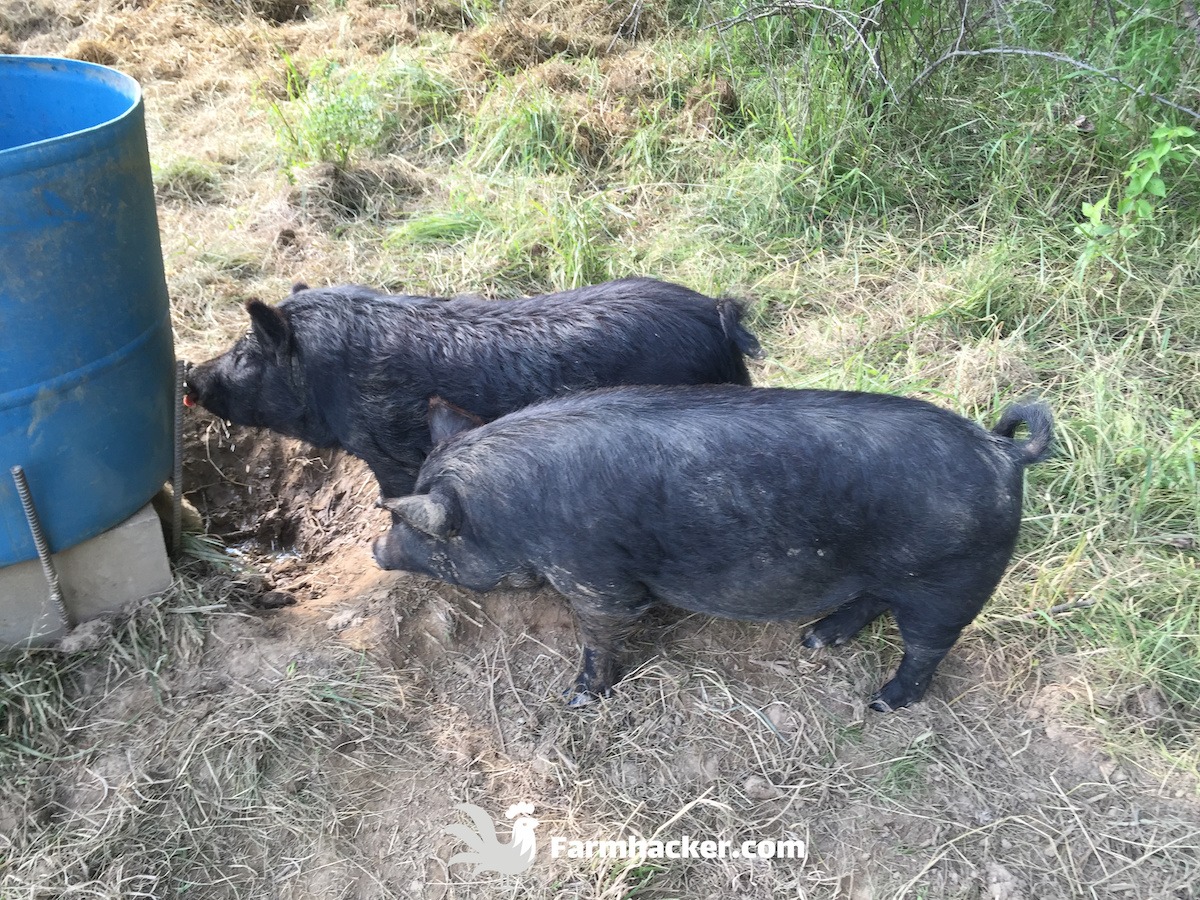
There are several ways to provide your pigs with drinking water. You can either buy a pig waterer or build one from scratch.
Check out my article on The Best Pig Waterers to learn more.
If you live in area where water freezes in the winter, you’ll need a heated pig waterer. Otherwise you’ll be constantly breaking ice or refilling water.
Check out my article on The Best Heated Pig Waterers to learn more.
You can also give your pigs access to a pond or a stream. They would actually appreciate having a place to cool off on hot summer days.
We do this with our pigs as well.
Can I build my own pig waterer?

Yes, you can actually. I’ve built pig waterers on my farm multiple times. And the great thing is that it’s not that hard.
One method is to use a 55 gallon barrel and install a nipple drinker on it. You can also install nipple drinkers all the way around it so more than one pig can drink at once.
Check out my article on How to Make an Automatic Pig Waterer to learn more.
Another option is to use a 275 gallon tote. You can install adapters on it that will allow you to connect a nipple drinker to it as well.
Check out my article on How to Make a Portable Pig Waterer From a 275 Gallon Tote to learn more.
What type of pig shelter do I need?
Pigs will need some type of shelter to so they can get out of the sun when it’s hot, have a place to sleep at night, and stay warm in the winter.
The shelter size will be determined by how many pigs you raise. It needs to be big enough so all of them can fit in it comfortably.
It also needs to be designed in a way that rain or snow won’t saturate the pigs that are staying inside of it.
And if you are raising hogs on pasture, it may need to be portable, depending on how you rotate your pigs.
What type of pig fence do I need?

The type of pig fence you need will depend on how you are planning on raising your pigs. If you will be raising your pigs on pasture, you have a few options.
One type of fence you could use is portable electric netting. This type is great if you are continually moving your pigs around the pastures.
You can also set up paddocks using step in posts and polywire electric fence. This is how I raise my pigs on pasture.
Another option is to set up paddocks using woven wire fence. This is typically the most expensive option but is also the most permanent.
Check out my article on The Best Pig Fences to learn more.
What types of pigs should I raise?
There are generally two types of pigs. There are lard pigs and there are bacon pigs.
Lard pigs are a type of pig that were traditionally raised for producing lard.
Since lard is not commonly used anymore, these pigs have fallen out of favor in recent times. However, there has been a resurgence with these types of pigs as more and more small farmers are raising them for their great tasting pork and other characteristics.
Bacon pigs are a type of pig that were traditionally raised for producing a lot of bacon. Bacon pigs are currently the most common types of pigs.
There are also full size pigs and small size pigs that are sometimes called “compact” pigs.
The type of pig you choose will depend largely on what type of pig operation you are planning on running and what type of pork you are wanting to produce.
What breed of pigs should I raise?
Each breed of pig has it’s own characteristics, dispositions, flavors, growth rates, and sizes.
Full size heritage breeds include the Berkshire, Large Black, Hampshire, Yorkshire, Red Wattle, Duroc, Tamworth, Chester White, Mulefoot, Poland China, Choctaw, Gloucestershire Old Spots, Mangalitsa, and more.
I plan on writing about each of these individual breeds in the future. For now, a quick Google search will give you some good info about them.
Small size heritage breeds includes the Guinea Hog (not to be confused with the guinea pig) and Kunekune.
I have personally raised both of these breeds and love them. They have a great disposition and can gain weight from foraging alone.
The downside to these breeds are that they don’t get as large as regular pigs do. But their pork is still great in my opinion.
If you have a small farm, a smaller breed is probably better for you. If you have a large farm and want to produce a lot of pork, a large breed may be better for you.
When just starting out, don’t get too hung up on the type of breed you should raise. Try a few different types if you aren’t sure.
It may be difficult to find the exact breed you want in the area you live. I recommend buying pigs that you can easily get at first.
I also wouldn’t recommend spending a lot of money on purebred piglets when starting out. Get your feet wet with simply raising pigs at first. After that, you’ll have a better idea about what you want to do.
How do you haul pigs?
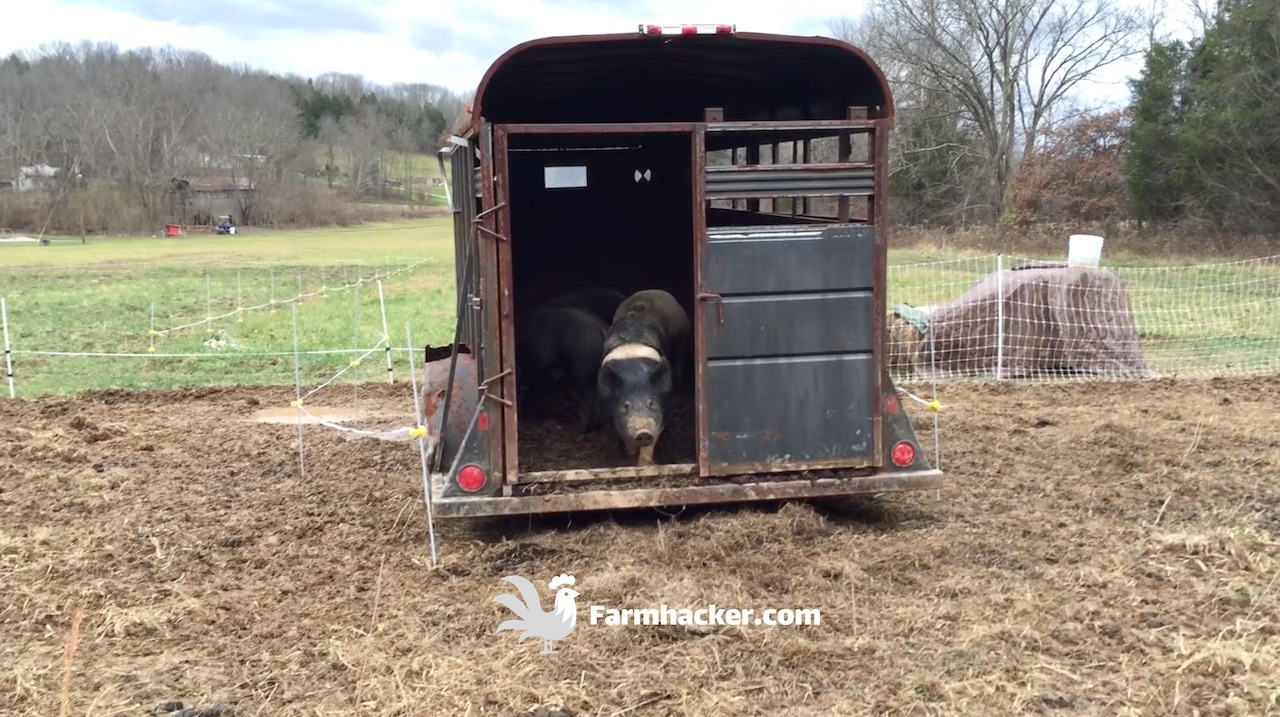
The best way to haul pigs is with a livestock trailer. Even a small horse trailer or bumper trailer will work as well.
If you decide to make your own trailer, you’ll need to make it extremely strong.
I recently had someone show up to my farm to buy some pigs from me with a homemade trailer. He used a flatbed bumper trailer and had built sides on it by using what looked like deck boards.
Long story short, we got the pigs loaded into the trailer but, as soon as we shut the homemade door, they broke right through it.
Pigs are strong and they don’t prefer to be confined. So your pig trailer needs to be tough.
With all of this in mind, you can still get creative. I know a farmer who made a pig hauler out of an old minivan. He put a fence behind the driver’s seat and took the seats out of the back.
You can’t haul as many pigs that way but it worked for him.
Also, loading pigs can be tricky. This is especially true for those of us who raise pigs on pasture. Check out my article on Loading Pigs Into a Trailer Is Easy Using This Method to learn how to do this.
How do you process pigs?
In the U.S., if you want to sell the pork you produce on your farm, your pigs must be processed at a USDA inspected processing facility.
You’ll want to find a local processors near you. Call around and make sure they are USDA inspected. Some processors will even put a custom label on your pork using your own logo and name.
The costs will vary based on the processor. There is usually a kill charge, a per pound cost, and then a curing cost for bacon, ham, or any other curing service they offer.
The processor I use charges a $45 kill charge and then $0.85 per pound processed. If I want bacon cured, they charge $3 per pound.
Again, all pork processors charge different rates but hopefully this will give you an idea for how much you’ll have to pay to have your pigs processed.
Once you find a USDA inspected facility, you will need to call ahead and set up a time to drop your pigs off. When you arrive, you will fill out a cut sheet where you tell the processor what cuts you want when they process your pigs.
Each processor offers different types of cuts but some common cuts are pork chops, bacon, sliced pork belly (basically uncured bacon), sausage (seasoned with mild or hot spices), ground pork, boston butt, shoulder, ham roast, ham steak, and spare ribs.
Other items may include pig feet, pig tail, jowl bacon, and even lard.
It typically takes a week or two before you get your pork back from the processor.
How do you sell pork?
I raise pigs on pasture and supplement them with non-GMO feed when necessary. Because I raise this type of pork, I have people that are interested in buying pork from me.
I sell my pork by the cut. This means that I keep all the pork from my pigs in freezers and sell individual cuts to people as they need them.
Some farmers sell whole pigs, half pigs, or quarter pigs. This simply means that either one person gets all the pork from a certain pig, the pork is split between two people, or the pork is split between four people.
It’s completely up to you as far as how you want to sell your pork. You can even sell yours using both of these methods.
As far as how much to charge goes, you’ll want to make sure you not only cover your costs, but also cover your time and make a profit.
If you live near a large city, this is easier because local pork and pastured pork can be sold for a premium.
One good way to determine what your market will bear is to find other local pork producers and see what they are charging.
What else can pigs be used for?
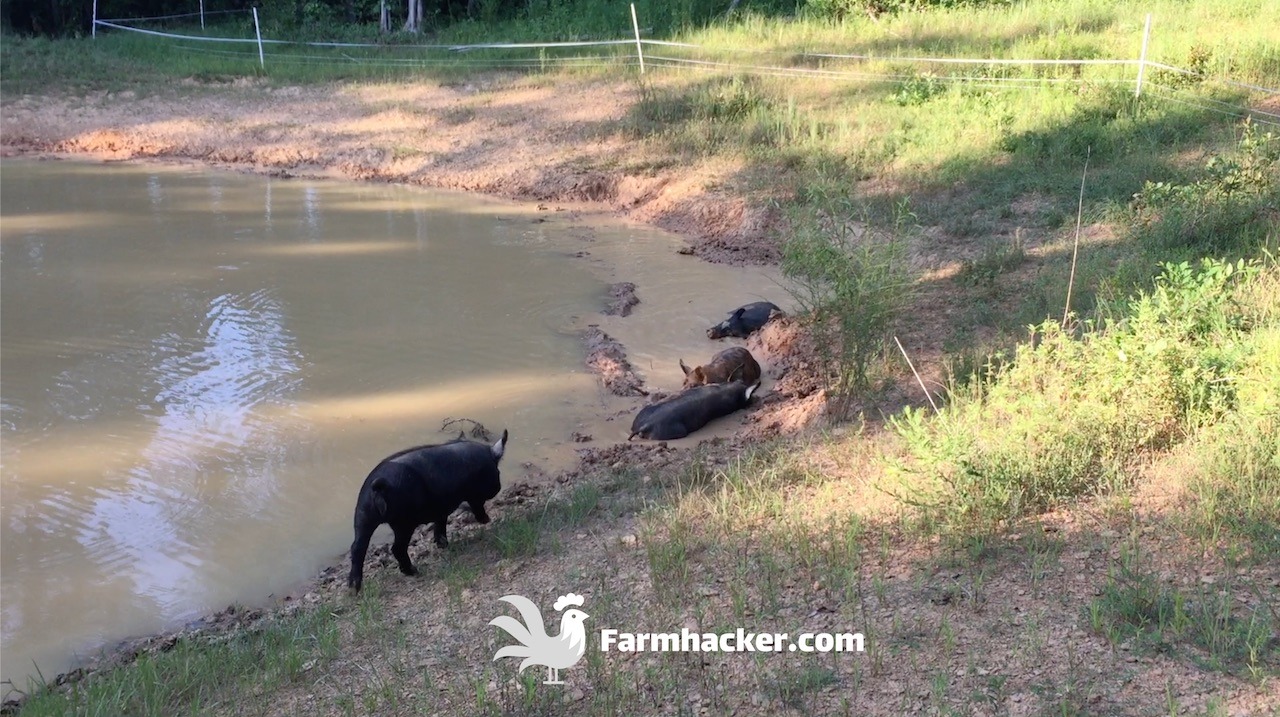
If you know anything about permaculture, then you’ve probably heard of the concept of animals being looked at through the lens of needs, products, behaviors, and intrinsic characteristics.
Using this concept, let’s take a look at some of the pigs behaviors.
Two of a pig’s behaviors are that it uses its nose like a plow and it loves to wallow in the mud. When thinking about those two behaviors, you can then ask how can you use these behaviors to your advantage on your farm?
On our farm, we took advantage of this in some unique ways. One way was that we used our pigs to till a new garden so we didn’t have to use a tiller. It saved us a lot of work. Check out my article on How to Till a Garden Without a Tiller Using Pigs to see how.
We also used our pigs to help stop a leaky pond from leaking. It really works. Check out my article on How to Seal a Pond Naturally With Pigs to see how.
Also, we also have used our pigs extensively in clearing out underbrush and cleaning up the forest floor in our wooded areas. Not only were our pigs able to be fed by this process, but we were able to put them to work for us.
The reason I am sharing all of this with you is to hopefully challenge you to think about your pigs as not just animals that produce pork.
Joel Salatin talks about how pigs have a plow in the front and a manure spreader in the back. Keep that in mind when putting your farm systems in place.
Conlusion
I hope this guide has been helpful. There are several more topics about raising pigs that I want to cover in this guide. I’m also planning on expanding on the current topics. Once I have it written, I’ll be posting updates.
Please feel free to post questions and comments in the comments section below.

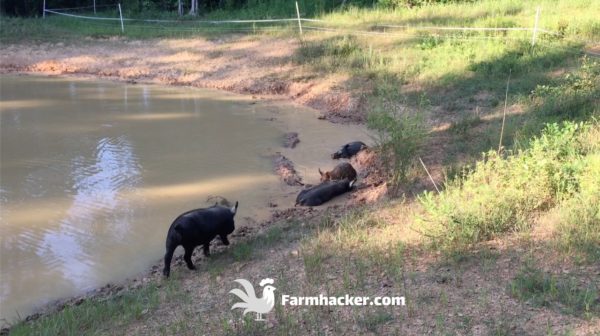
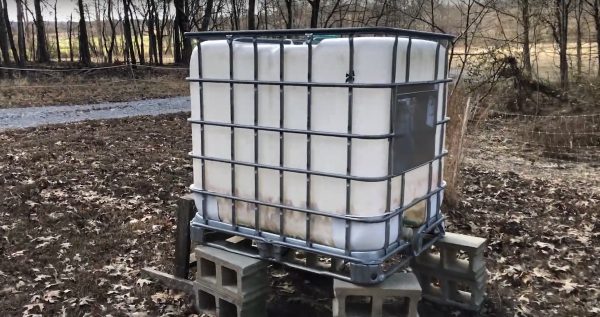
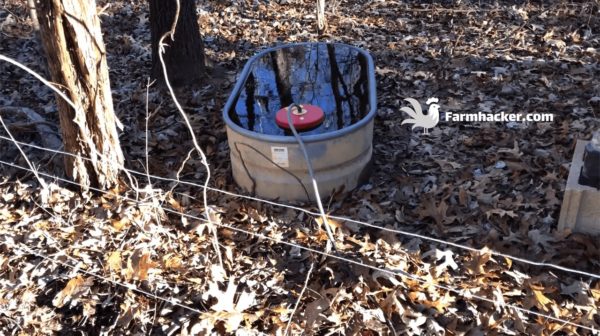
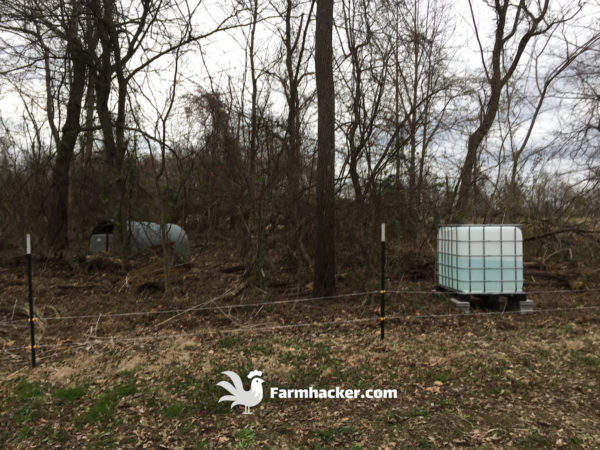
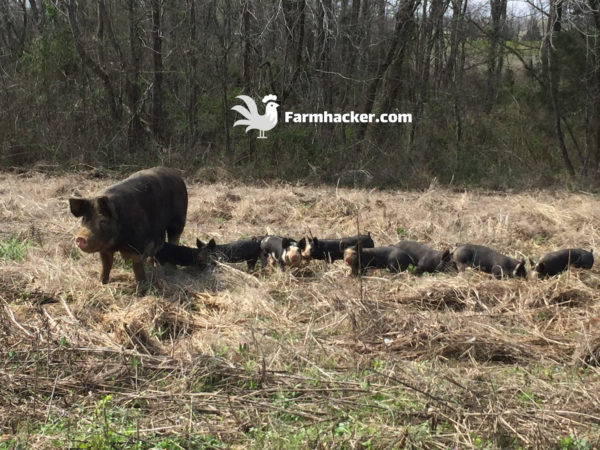
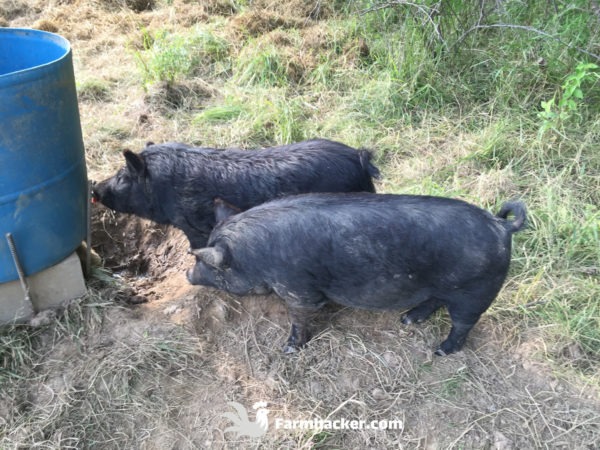

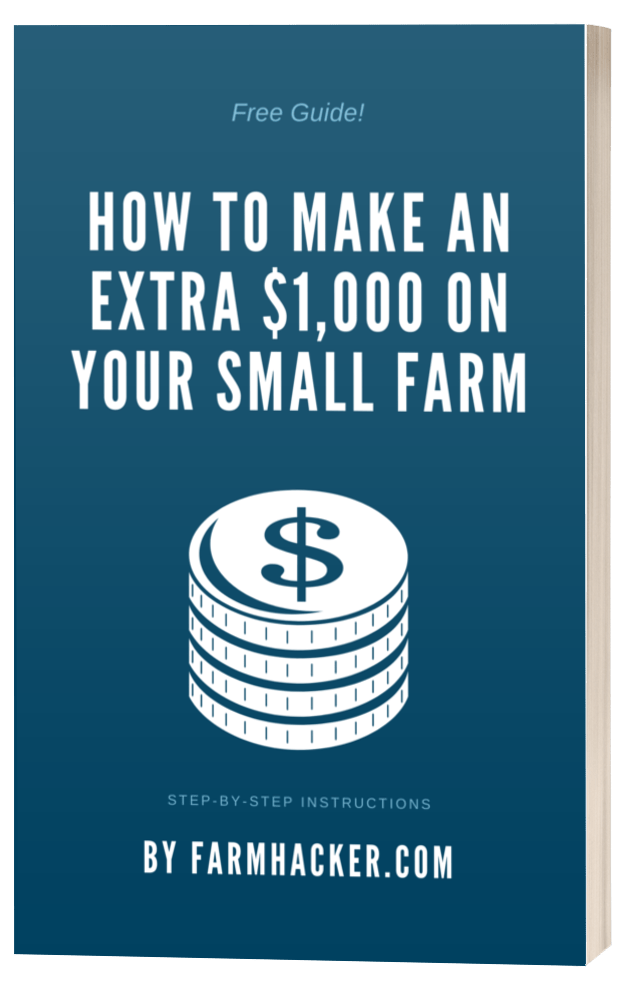
Hi Casey, just a quick question – with your home base and 9x 1 acre paddocks for your pigs to rotate through – roughly how many pigs do you farm with that setup?
Thanks!
Hi Simmone, roughly 15 – 20 hogs. It can handle much more than that though.
If I keep pigs next to my creek, do I need to worry about them swimming away?
Hi Rei, are they fenced in?